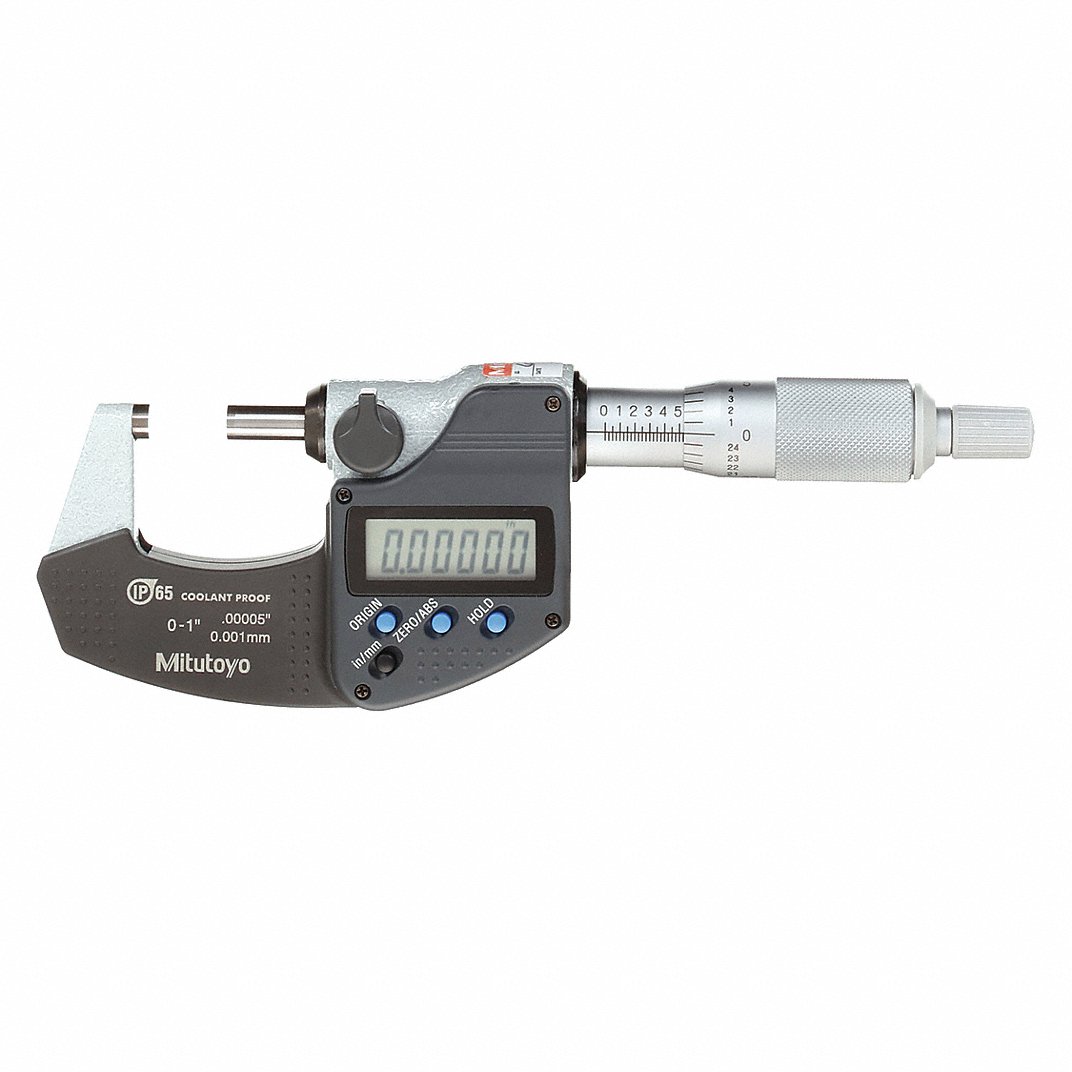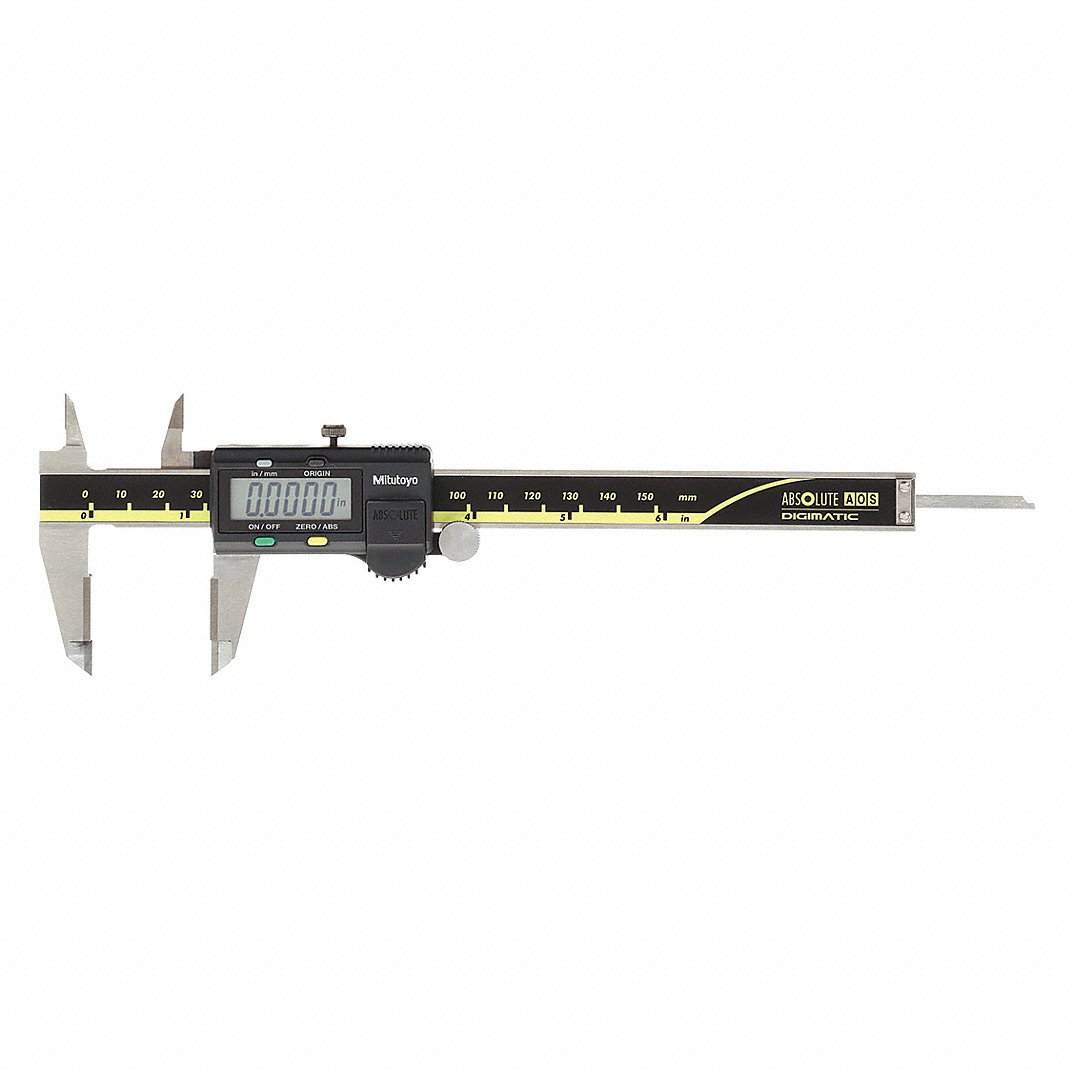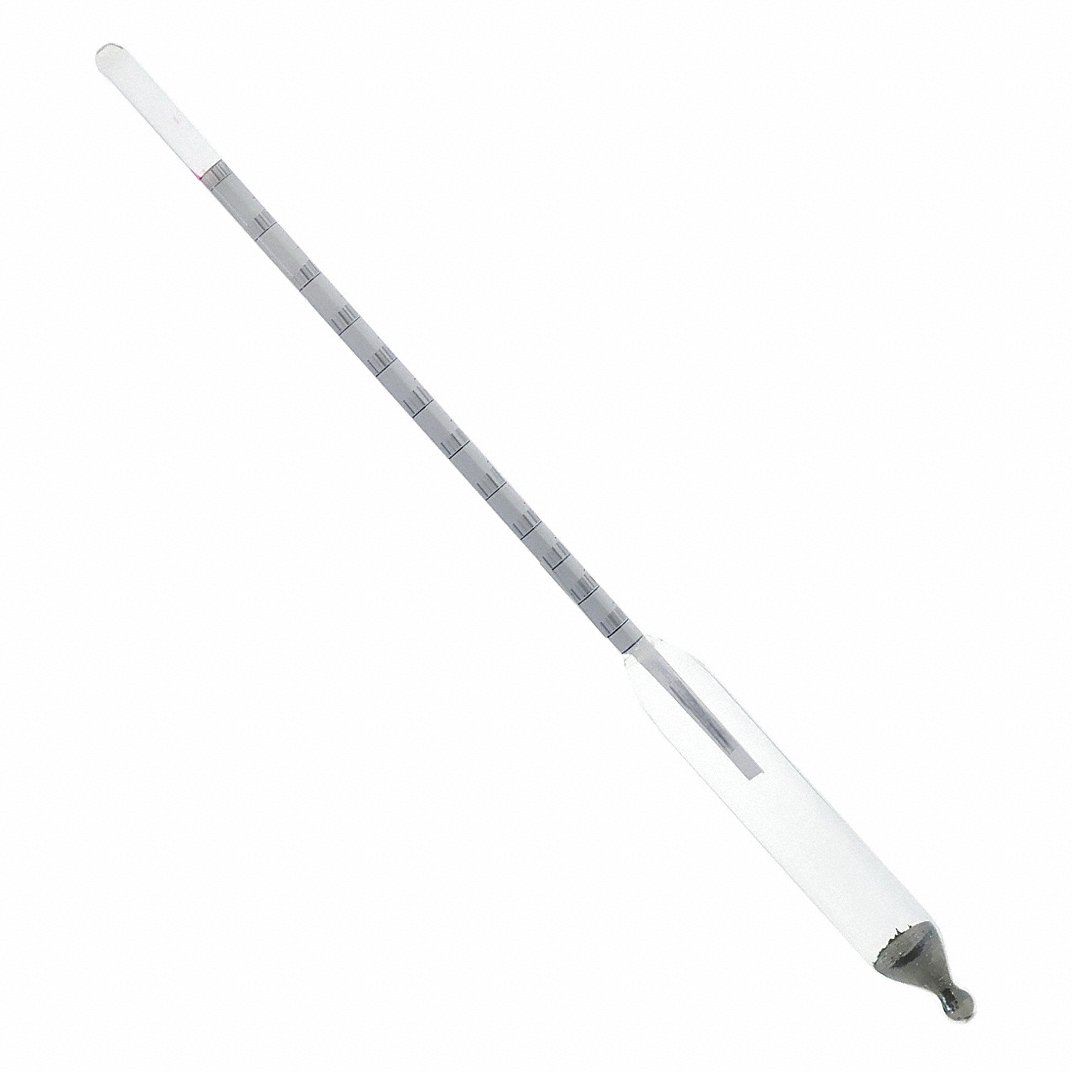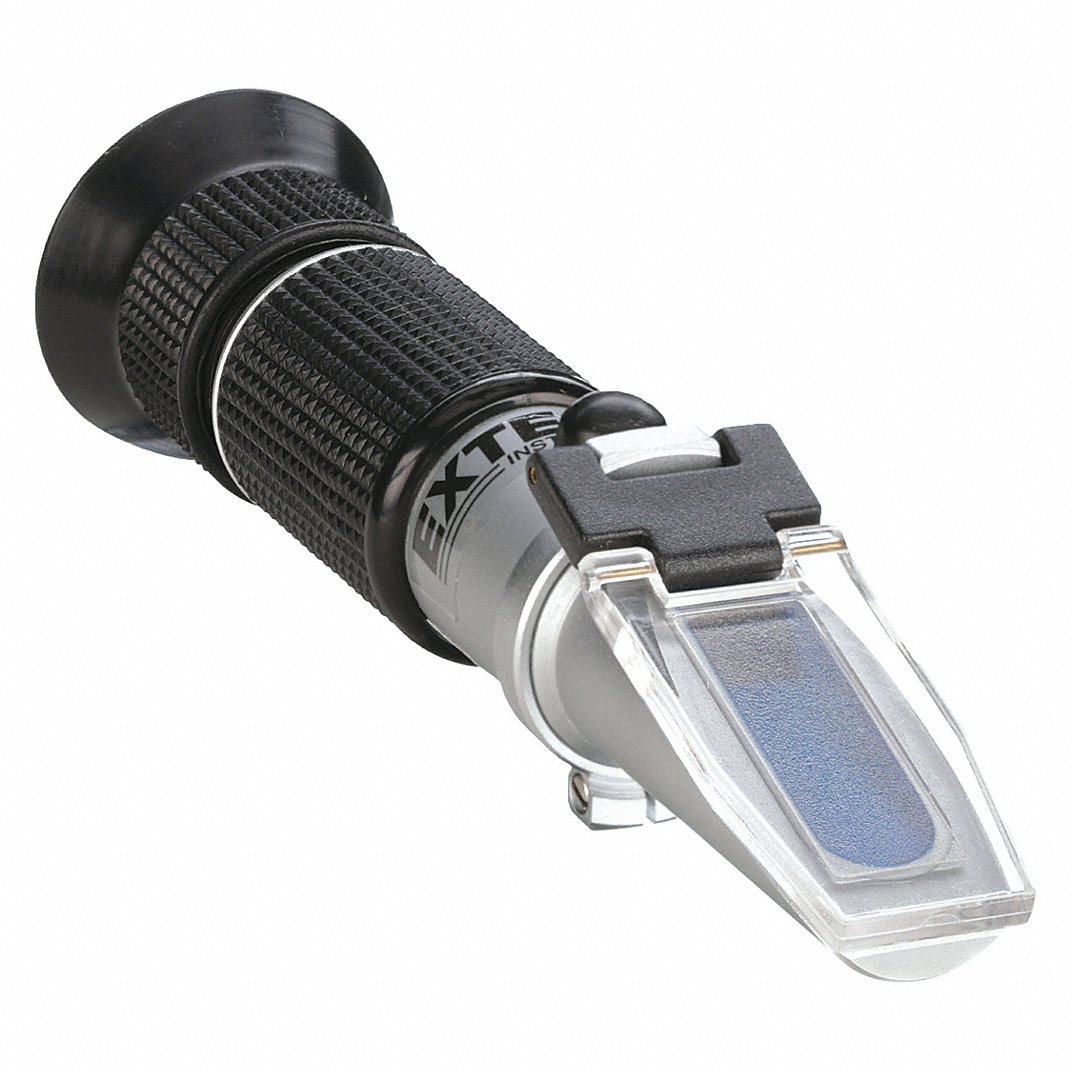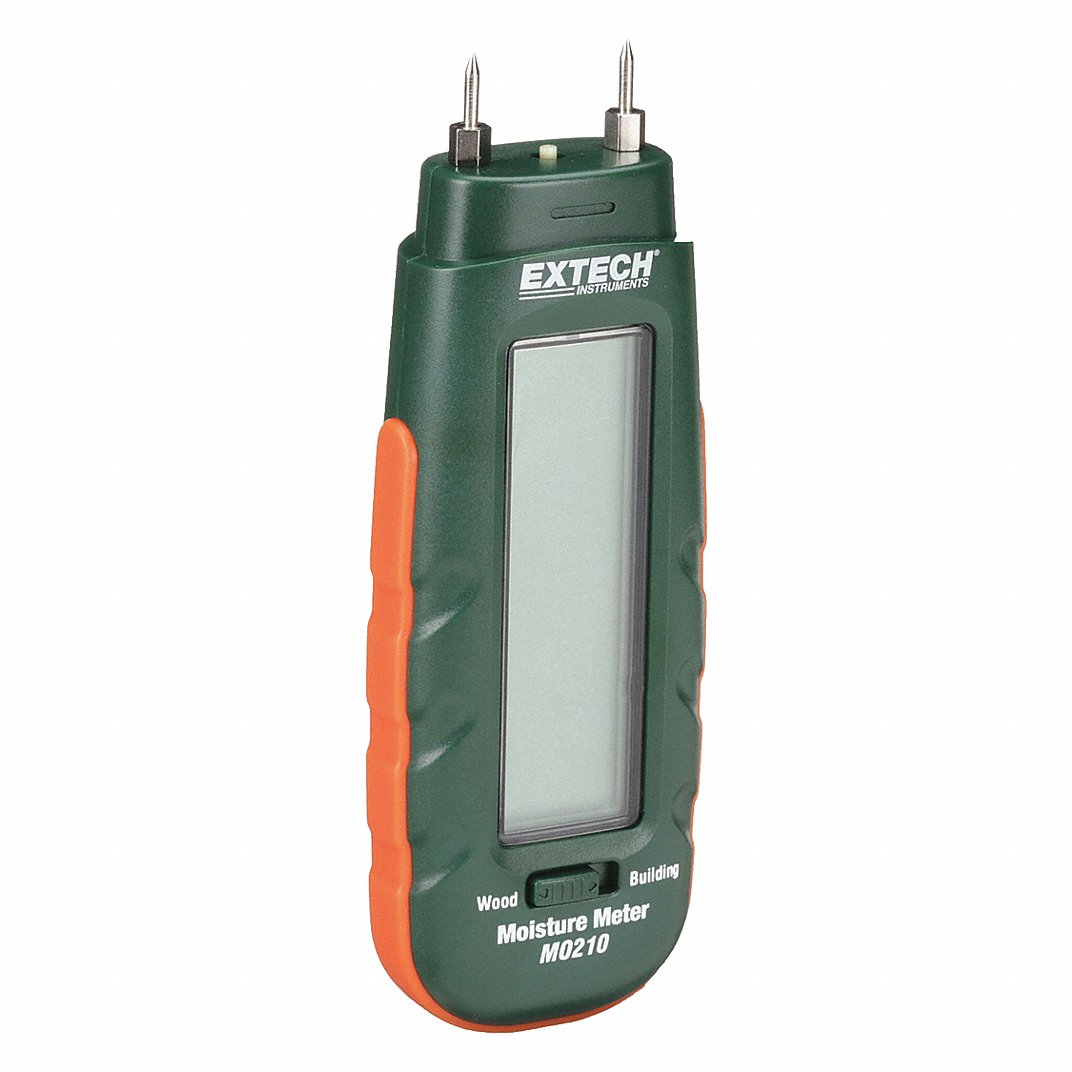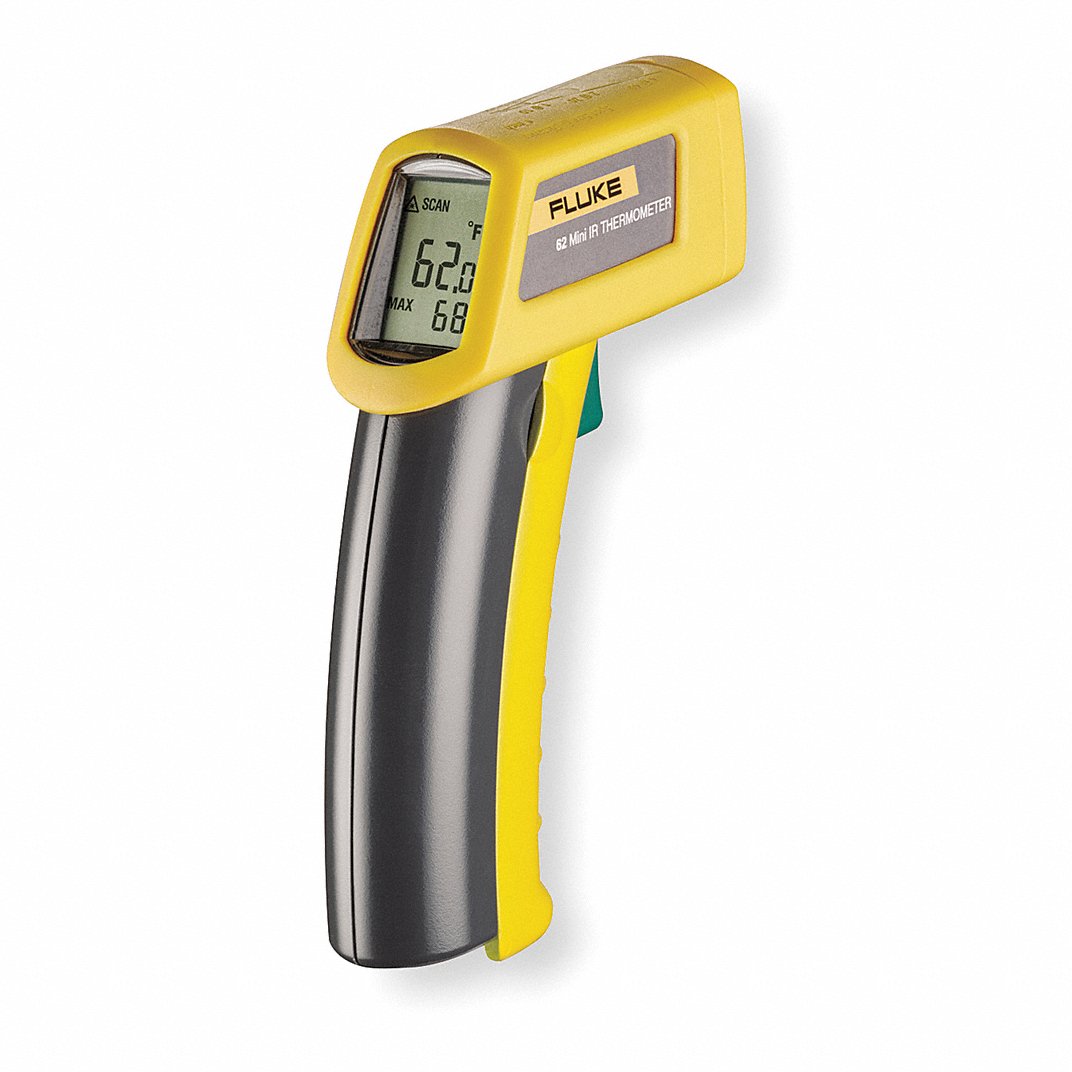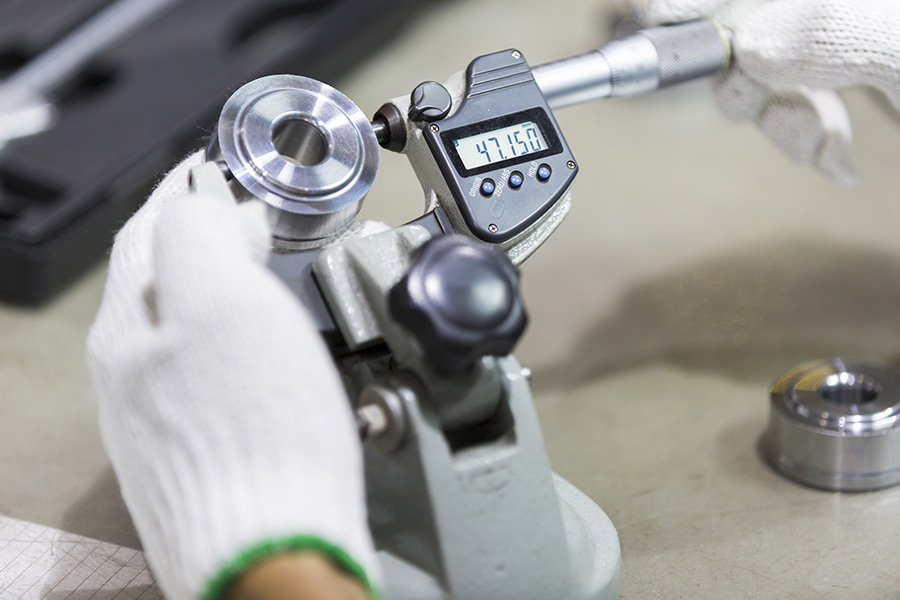

Choosing a Micrometer for the Perfect Fit
By Grainger Editorial Staff 10/3/21
Micrometers make precise measurements, ensuring a perfect fit for the task. Machine shops use micrometers to verify that their work meets specifications when fabricating custom parts. Pipefitters, mechanics and quality assurance professionals may also keep a micrometer in their toolbox to check tolerances tighter than 0.001 inch.
Micrometers come in a wide variety of configurations. Picking the right one for your purpose depends primarily on three factors: the shape and size of the part you’ll be measuring, the accuracy your work requires and the environment you’ll be working in.
Many micrometers come with digital readouts or dial gauges, which are easier to read than the increments engraved on the tool’s barrel. Larger digital readouts are especially useful when the tool must be held at an angle or positioned inside a tight space, which can obstruct the user’s view of the barrel.
Match the Micrometer to the Job
Micrometers come in different shapes depending on the type of object they are designed to measure. For measuring the thickness of an object, an outside micrometer is essential. Outside micrometers look like a clamp — a moving spindle comes together with a fixed “anvil” to measure the thickness or diameter of a part.
Digital caliper-jaw micrometers are used to measure the inside dimensions of holes, tubes, pipes, or grooves, and have jaws that expand and contract. These micrometers are held at a parallel angle to the surface of a hole or bore to measure diameter with contact points on the jaws.These tools usually look like an extendable rod, although some have jaws that push apart to measure the width of a gap or the inside diameter of a bore hole.
Depth micrometers measure the depth of a hole. They have a wide base that sits atop the hole and a probe extending downward.
Micrometer heads have no clamp and are designed to be mounted to other tools or fixtures. For example, a micrometer head can be mounted to a workbench and used to calibrate a tool head height.
Spindle tip styles: Micrometers come with a variety of spindle tips for making different types of measurements.
Flat Tip: The most common micrometer tip. A small, flat surface on the anvil and spindle is designed to make solid contact against a component. Flat tips are a good general purpose tool, allowing you to measure the thickness at a specific point on the component without worrying about damage or slipping.
Blade Tip: if you’re measuring a narrow groove, you’ll need a blade tip micrometer, fitted with a narrow blade tip that can fit inside tight spaces.
Screw Thread Tip: This specialized tip fits between the threads of a screw, allowing the spindle to measure their depth.
Ball Tip: For round objects, a ball tip is designed to make a pinpoint of contact for greater accuracy.
Disc Tip: If you’re measuring a soft or flexible material, a wide disc tip can make solid contact without leaving a mark or compressing the component being measured.
Universal Set: Fortunately, you don’t have to pick just one tip. Universal micrometer sets come with interchangeable tips that will allow you to use a single micrometer for multiple types of measurement.
Find the Right Range and Resolution
Next, you’ll need to pick the range — or size — of micrometer you need.
Most micrometers operate within a one-inch or 25 mm range. For example, a common outside micrometer will measure thicknesses between one and two inches. The clamp is not large enough to accommodate an object thicker than two inches, and the spindle will not extend to measure thicknesses of less than one inch. So you will need to pick a micrometer whose range will accommodate the thickness of the objects you will be measuring. t's important that the range is close to the common measure it will be used on. If the range is significantly bigger, then too much adjustment will be needed, which is inconvenient for precise work.
Outside micrometers also offer a variety of jaw depths for fitting around wide parts. Most micrometers feature about one inch of jaw depth, meaning you can take measurements one inch from the outside edge of the object being measured. If you need to take measurements far towards the interior of a wide plate or pipe, specialty adjustable collar micrometers can be configured in widths of up to 41 inches.
Resolution: A micrometer’s resolution and accuracy shows how finely it can measure. Most micrometers measure to the 0.0001 inch, a common unit for machining and metalworking tolerances. Specialty micrometers can make finer measurements. The most precise outside micrometers can measure within five-hundred-thousandths of an inch, while benchtop laser micrometers offer precision as fine as 0.00001 inch.
Shops may need to verify the accuracy of their micrometers for demanding jobs, like manufacturing aerospace components or medical implants. Some micrometer manufacturers provide a long-form certificate of calibration traceable to the National Institute of Standards and Technology (NIST). This certificate verifies that the tool has been tested in a laboratory to meet or exceed its rating for precision and accuracy.
You can also verify your micrometer’s accuracy in-house with a setting pin. These rods are precisely manufactured to a set length. They can quickly verify that your micrometer is calibrated.
Of course, not every user needs such precision. For applications like woodworking, tolerances may never be tighter than 0.015 (one sixty-fourth) of an inch. A cheaper, more resilient caliper will serve well for making rougher measurements.
Stand Up to the Working Environment
Finally, your micrometer must be capable of withstanding its operating environment. Digital precision instruments can be damaged by the abrasive dust and coolant fluid found in machine shops. Micrometers come with a two-digit Ingress Protection (IP) code, an American national standard for protective enclosures.
The first digit of the IP rating is for dust protection — a micrometer with a dust rating of 5 is not fully dust-tight, but can operate in dusty environments. Most micrometers have a rating of 6, meaning they are entirely dust-tight. The second digit of the IP code is for water protection. A micrometer rated 4 is splash proof, while a rating of 7 means the tool can be immersed in up to 1 meter of water for 30 minutes without damage.
The spindle and anvil tips can also be damaged by use. If the tool will be used to measure abrasive surfaces, hardened carbide tips can resist wear, preventing damage to the measuring surface.
Other Considerations
Ratcheting or Friction Thimble: The amount of pressure applied to the micrometer’s spindle can affect your measurement, especially when measuring flexible or malleable materials. To accommodate for this potential distortion, most micrometers come with ratcheting or friction thimbles, which automatically limit the spindle’s tightness to a set torque value. This helps the operator apply the same amount of pressure to every measurement, ensuring consistency. A ratcheting or friction thimble is especially important if the tool will be used by multiple operators throughout the day.
Digital Displays and Connectivity: A connected readout can help the micrometer’s operator work more quickly and take measurements with greater certainty. If you’re taking numerous measurements, a wireless connection or an SPC digital output cable can link the micrometer to a desktop computer or table display. This not only allows for a larger, brighter readout, but the computer can also be set to check the micrometer’s reading against preset “go/no go” tolerances, simplifying quality assurance checks. A connected device can also easily record every reading, saving valuable data for future analysis.
Visit Grainger.com for more information on micrometers and other precision measuring devices.
The information contained in this article is intended for general information purposes only and is based on information available as of the initial date of publication. No representation is made that the information or references are complete or remain current. This article is not a substitute for review of current applicable government regulations, industry standards, or other standards specific to your business and/or activities and should not be construed as legal advice or opinion. Readers with specific questions should refer to the applicable standards or consult with an attorney.

